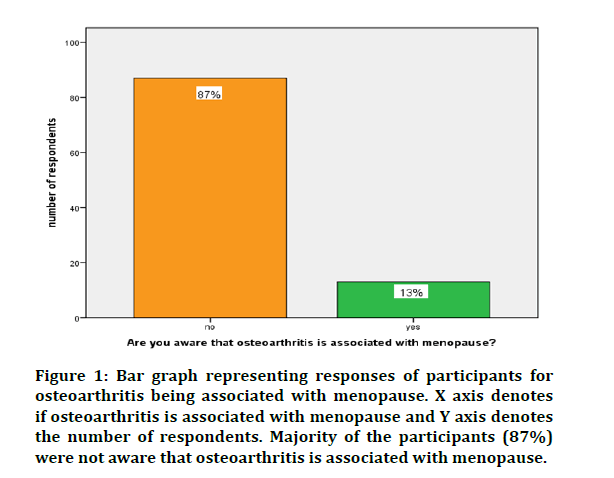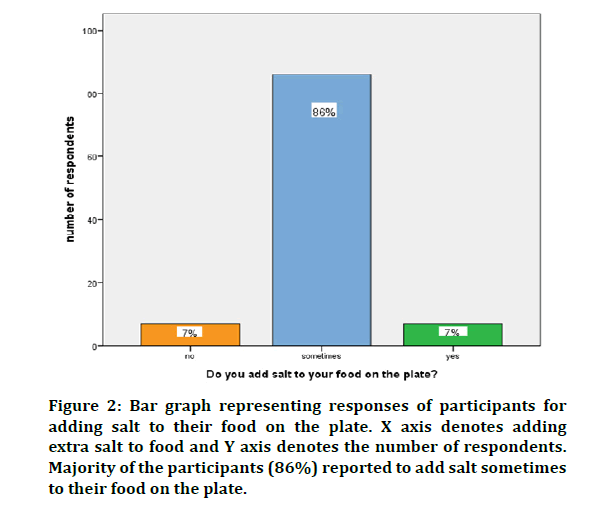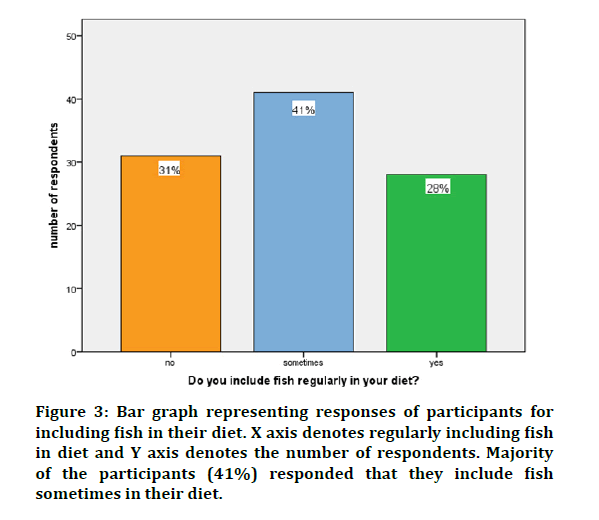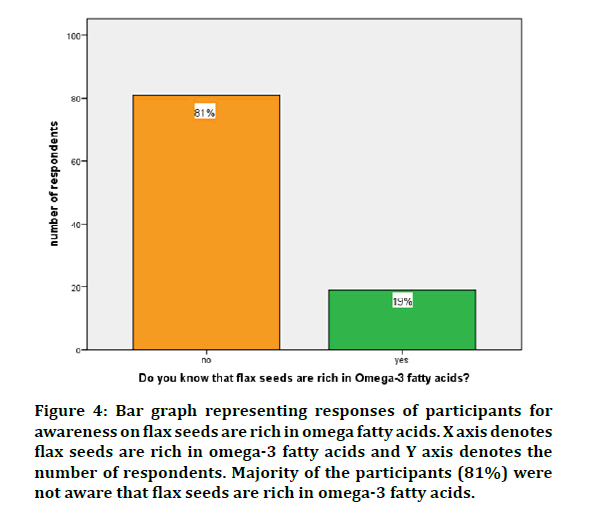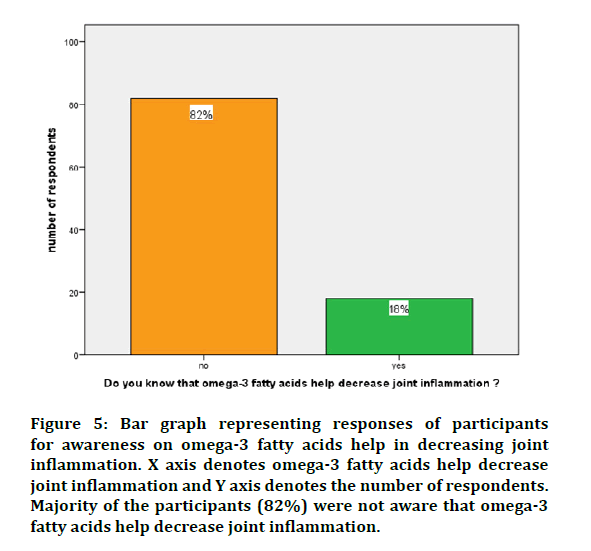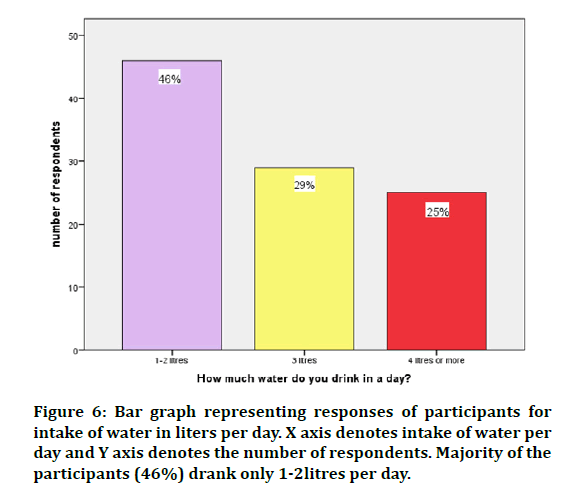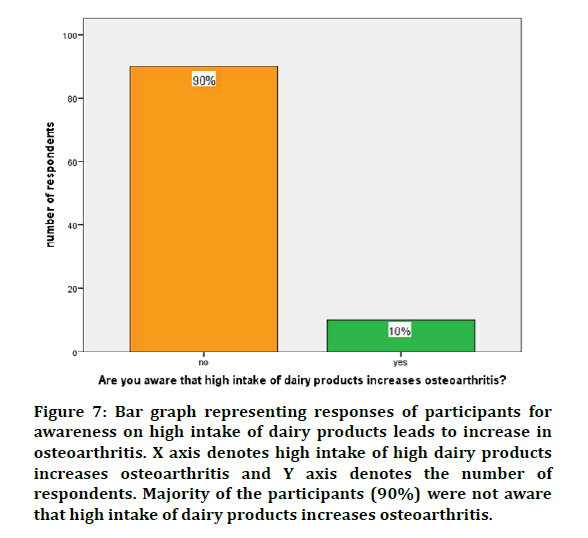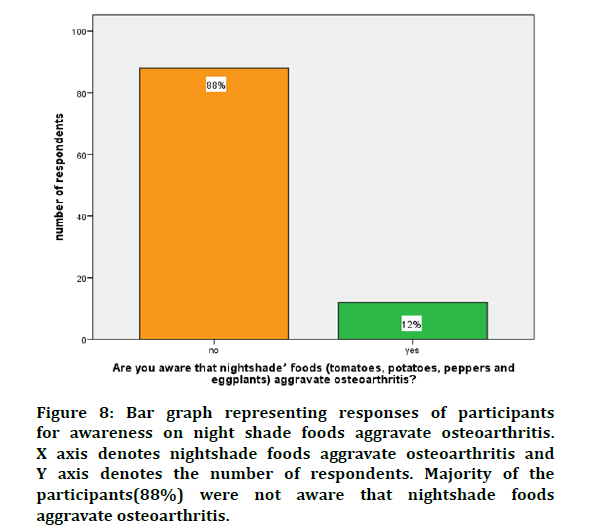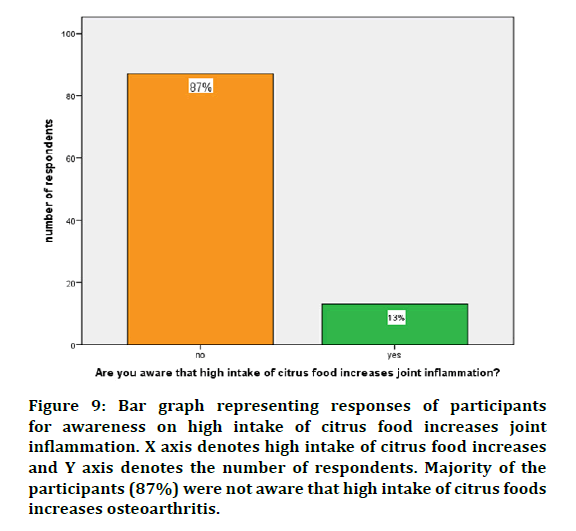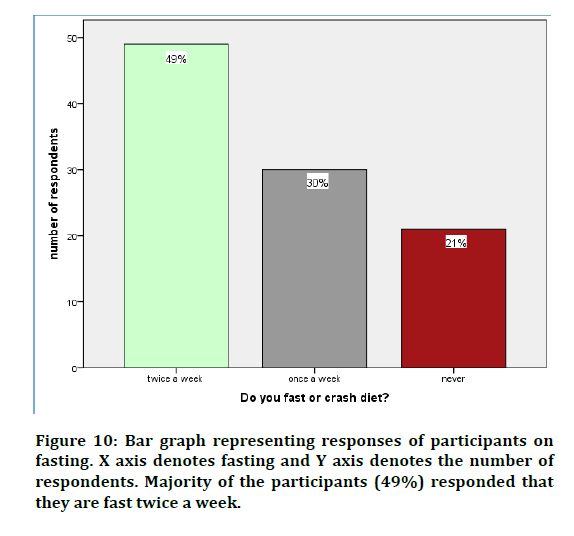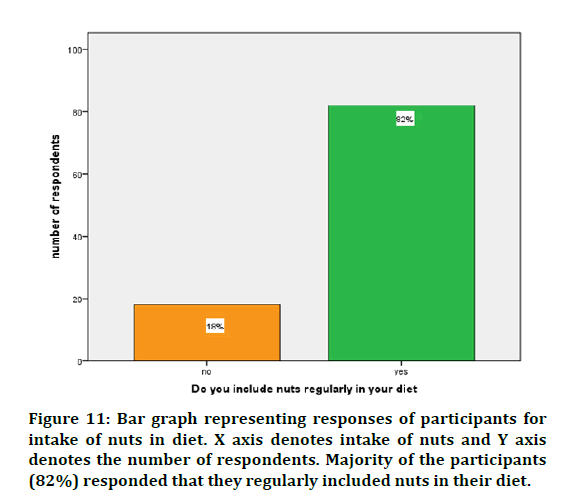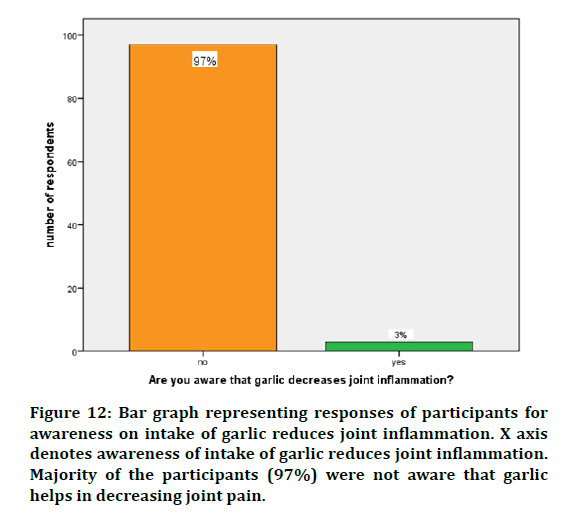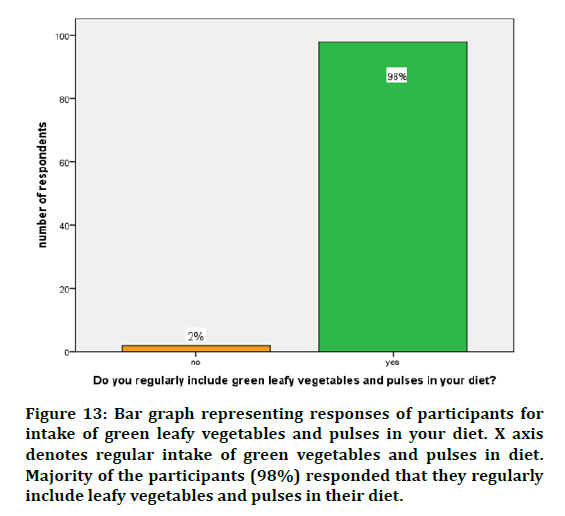Research - (2020) Advances in Dental Surgery
Awareness on Dietary Habits in Osteoarthritis Among Post-Menopausal Women-A Survey
Joshini Shanmugam, Vishnu Priya V* and Gayathri R
*Correspondence: Vishnu Priya V, Department of Biochemistry, Saveetha Dental College, Saveetha Institute of Medical and Technical Sciences (SIMATS), Saveetha University Tamilnadu, Chennai, India, Email:
Abstract
Osteoarthritis (OA) is a chronic disabling disease in the elderly especially in post-menopausal women, but very few studies have examined nutritional parameters of osteoarthritis patients. Knowledge on the dietary habits of osteoarthritis will help in reducing its effects and result in better prognosis. The aim of this study is to evaluate the level of awareness on the dietary habits in osteoarthritis among post-menopausal women. A self-administered questionnaire was designed and consisted of questions regarding the awareness of various dietary habits related to OA. The study population included 100 post-menopausal women in Chennai. The data were collected and statistically analyzed using SPSS software. The results show that the level of awareness on dietary habits in osteoarthritis among post-menopausal women was less. Majority of the participants (87%) were not aware that osteoarthritis is associated with menopause. Majority of the participants (81%) were not aware that flax seeds are rich in omega-3 fatty acids. Most of the participants (82%) were not aware that omega-3 fatty acids help decrease joint inflammation whereas only 18% were aware that omega-3 fatty acids help in decreasing joint inflammation. Majority of the participants (90%) were not aware that high intake of dairy products increases osteoarthritis. Most of the participants (88%) were not aware that nightshade foods (eggplant, tomato, bell pepper, potatoes) aggravate osteoarthritis. Majority of the participants (87%) were not aware that high intake of citrus foods increases osteoarthritis but only 13% knew that citrus fruits increase osteoarthritis. Majority of the participants (97%) were not aware that garlic helps in decreasing joint pain. Within the limitations of this study it can be concluded that the overall low level of awareness on dietary habits in osteoarthritis among post-menopausal women.
Keywords
Menopausal women, Osteoarthritis, Dietary habits, Online survey, Questionnaire
Introduction
Menopausal and postmenopausal health has emerged as an important concern owing to increased longevity and changing lifestyle of Indian women. It is estimated that a total of 130 million Indian women are expected to live beyond menopause by 2015 [1].
Osteoarthritis (OA) is the second most common rheumatological problem and is most frequent joint disease encountered in the clinical practice [2]. This is the most common cause of locomotor disability in the elderly. OA [3] is a chronic degenerative disorder of multifactorial etiology characterized by loss of articular cartilage and periarticular bone remodeling. It is probably not a single disease but represents the result of various disorders as joint failure. OA may cause joint pain, bony or soft tissue swelling, tenderness, bony crepitus, periarticular muscle atrophy, bony hypertrophy, deformity and marked loss of joint motion. It commonly affects the hands, feet, spine, and large weightbearing joints, such as the hips and knees. It can present as localized, generalized or as erosive osteoarthritis. The dramatic decline in estrogen levels during the menopause usually leads to a decrease in bone density in women. The prevalence of osteoporosis among postmenopausal women (PMW) is increasing across the globe. One study showed that 28.4% of Malaysian women are osteoporotic [4].
In addition to decreased hormones after menopause, nutritional factors play a significant role in the development of osteoporosis among women [5]. Women tend to have insufficient calcium intake on daily basis, as average calcium intake (426 mg/day) is insufficient for postmenopausal women and is associated with low bone density [6]. There is little change until menopause, when a rapid drop in estrogen production leads to an increase in bone turnover and accelerated bone loss, accompanied by microstructural alterations [7]. The overall effect of menopause is an average annual bone loss of 2–3% during the first few years and 0.5– 1% thereafter [8]. Menopause is the biggest risk factor for osteoporosis in women.
Approximately 60–80% of peak bone mass variance is determined by genetics [9]. However, we can postulate that the risk of osteoporosis can be reduced by adopting healthy lifestyle choices that increase peak bone mass in children and adolescents, and reduce bone loss in adults [10,11]. Factors that improve bone health include nutrition (particularly calcium and protein intake, but also vitamin D, potassium, phosphorus and other micronutrients and macronutrients), regular weight-bearing exercise, smoking cessation (where appropriate) and reduced alcohol intake [10,11].
It has been shown that lifestyle intervention prevents the loss of spinal bone density in premenopausal women [12]. Osteoporosis, OA and other sequelae may be avoided by raising adequate knowledge. Therefore, the aim of this study was to evaluate the awareness of dietary habits in osteoarthritis in post-menopausal women in Chennai.
Materials and Methods
Study design and setting
A cross sectional study was conducted on 100 post-menopausal in Chennai. The advantages of this study were that the study population belonged to the same ethnic group and can be used to create awareness among the postmenopausal women regarding the field of study. However, the drawback of this study was population participation, only women who were ready to cooperate were included in the study.
Data collection
A survey software was used to reduce sampling bias. Repeated answers or questions were avoided. Data collection was done using a selfstructured questionnaire consisting of 12 questions. Google forms were used to collect the data and circulate among the patients. Data was assessed based on answers to these questions. Questions were based on awareness and dietary habits. Data analysis done using SPSS by IBM.
Statistical analysis
After tabulation using MS Excel, the data was exported to IBM SPSS software [Version 19: IBM Corporation NY USA] for statistical analysis. Descriptive statistics was done to assess the responses given by the students.
Ethical approval
The ethical approval for the study was obtained from Institution Review Board, Saveetha Dental College.
Results and Discussion
Majority of the participants (87%) were not aware that osteoarthritis is associated with menopause and only 13% knew that menopause is associated with osteoarthritis (Figure 1). 86% of participants responded that they sometimes add extra salt to their food on plate, 7% responded that they never add salt to their food on plate and 7% responded that they constantly add extra salt (Figure 2). Majority of the participants (41%) responded that they sometimes include fish in their diet, 31% responded that they never eat fish and 28% responded that they regularly include fish in their diet (Figure 3). 81% of participants were not aware that flax seeds are rich in omega-3 fatty acids (Figure 4). 82% of participants were not aware that omega-3 fatty acids help decrease joint inflammation whereas only 18% were aware that omega-3 fatty acids help in decreasing joint inflammation (Figure 5).
Figure 1: Bar graph representing responses of participants for osteoarthritis being associated with menopause. X axis denotes if osteoarthritis is associated with menopause and Y axis denotes the number of respondents. Majority of the participants (87%) were not aware that osteoarthritis is associated with menopause.
Figure 2: Bar graph representing responses of participants for adding salt to their food on the plate. X axis denotes adding extra salt to food and Y axis denotes the number of respondents. Majority of the participants (86%) reported to add salt sometimes to their food on the plate.
Figure 3: Bar graph representing responses of participants for including fish in their diet. X axis denotes regularly including fish in diet and Y axis denotes the number of respondents. Majority of the participants (41%) responded that they include fish sometimes in their diet.
Figure 4: Bar graph representing responses of participants for awareness on flax seeds are rich in omega fatty acids. X axis denotes flax seeds are rich in omega-3 fatty acids and Y axis denotes the number of respondents. Majority of the participants (81%) were not aware that flax seeds are rich in omega-3 fatty acids.
Figure 5: Bar graph representing responses of participants for awareness on omega-3 fatty acids help in decreasing joint inflammation. X axis denotes omega-3 fatty acids help decrease joint inflammation and Y axis denotes the number of respondents. Majority of the participants (82%) were not aware that omega-3 fatty acids help decrease joint inflammation.
46% of the participants responded that they drink only 1-2 liters of water per day, 29% drank 3 liters of water and 25% responded that they drink >4litres of water per day (Figure 6). 90% of participants were not aware that high intake of dairy products increases osteoarthritis (Figure 7). 88% of participants were not aware that foods like eggplant, tomato, bell pepper, potatoes aggravate osteoarthritis (Figure 8).
Figure 6: Bar graph representing responses of participants for intake of water in liters per day. X axis denotes intake of water per day and Y axis denotes the number of respondents. Majority of the participants (46%) drank only 1-2litres per day.
Figure 7: Bar graph representing responses of participants for awareness on high intake of dairy products leads to increase in osteoarthritis. X axis denotes high intake of high dairy products increases osteoarthritis and Y axis denotes the number of respondents. Majority of the participants (90%) were not aware that high intake of dairy products increases osteoarthritis.
Figure 8: Bar graph representing responses of participants for awareness on night shade foods aggravate osteoarthritis. X axis denotes nightshade foods aggravate osteoarthritis and Y axis denotes the number of respondents. Majority of the participants(88%) were not aware that nightshade foods aggravate osteoarthritis.
87% of participants were not aware that high intake of citrus foods increases osteoarthritis but only 13% knew that citrus fruits increase osteoarthritis (Figure 9). 49% of the participants responded that they are fast twice a week, 30% responded that they fasted once a week and 21% responded that they never fasted (Figure 10). 82% of participants responded that they regularly included nuts in their diet (Figure 11). Only 3% of the participants responded that they were aware that garlic helps in decreasing the joint inflammation and majority of the participants 97% were not aware that garlic helps in decreasing joint pain (Figure 12). Majority of the participants (98%) responded that they regularly include leafy vegetables and pulses in their diet (Figure 13).
Figure 9: Bar graph representing responses of participants for awareness on high intake of citrus food increases joint inflammation. X axis denotes high intake of citrus food increases and Y axis denotes the number of respondents. Majority of the participants (87%) were not aware that high intake of citrus foods increases osteoarthritis.
Figure 10: Bar graph representing responses of participants on fasting. X axis denotes fasting and Y axis denotes the number of respondents. Majority of the participants (49%) responded that they are fast twice a week.
Figure 11: Bar graph representing responses of participants for intake of nuts in diet. X axis denotes intake of nuts and Y axis denotes the number of respondents. Majority of the participants (82%) responded that they regularly included nuts in their diet.
Figure 12: Bar graph representing responses of participants for awareness on intake of garlic reduces joint inflammation. X axis denotes awareness of intake of garlic reduces joint inflammation. Majority of the participants (97%) were not aware that garlic helps in decreasing joint pain.
Figure 13: Bar graph representing responses of participants for intake of green leafy vegetables and pulses in your diet. X axis denotes regular intake of green vegetables and pulses in diet. Majority of the participants (98%) responded that they regularly include leafy vegetables and pulses in their diet.
From the results, it was observed that the level of awareness on dietary habits in osteoarthritis among post-menopausal women was less. These findings are conflicting with previous reports, which found that most of the women in their study had adequate knowledge about osteoporosis (85.2%) [13,14]. The adequate knowledge is probably due to the overall improvement of education level and better health information about osteoporosis. A study done by Salgado et al. [15], reported that high sodium intake is associated with arthritis. In the present study, 86% of the participants responded that they add salt to their food on the plate. This shows that the participants were not aware that intake of excess salt increases joint inflammation. Study conducted by Rajajei et al, concluded that omega-3 fatty acids is effective in reducing joint inflammation [16]. In the current study, most of the participants responded that they were not aware that omega-3 fatty acids help in reducing osteoarthritis. Parvez et al. [17] shows that nightshade vegetables such as potatoes and eggplants contain C-reactive protein which is known to cause inflammation in joints. The participants in the present study were not aware that nightshade vegetables should be restricted to control osteoarthritis. Ishibashi et al. [18] concluded that the hydroxyl radical scavenger H2 effectively reduces oxidative stress in patients with arthritis condition. The symptoms of RA were significantly improved with high H2 water. Similarly, the participants of the present study should be educated that increased intake of water per day is effective in reducing joint inflammation. Sköldstam et al. [19] reported that shorter duration of fasting did not affect osteoarthritis whereas frequent fasting increased joint inflammation. Most of the participants fasted twice a week. This shows that they were less aware of the fasting effects on osteoarthritis.
Although osteoarthritis (or OA) is more common as we age, it is not an inevitable part of aging. As researchers work to understand the causes of osteoarthritis, they can offer advice to help prevent the disease or its progression and lessen its impact on your life. Altering the dietary habit will not cure OA but it can lessen its effects. Limitations of this study include subjective error bias that may creep in. Hence a study including all post-menopausal women across the country in a similar study setup can provide better accurate results.
Conclusion
In conclusion, the findings from this study showed that the overall level of awareness on dietary habits in osteoarthritis among postmenopausal women was less. More health education camps, seminars, workshops may be conducted to create awareness on risk factors, early symptoms and the need to alter dietary habits for osteoarthritis in order to reduce its effects in the community.
Acknowledgement
The authors thank Saveetha Dental College for extending full support to complete this study.
Conflict of Interest
Nil.
References
- Sengupta A. The emergence of the menopause in India. J Int Menopause Society 2003; 6:92–95.
- Reginster JY, Pelletier JP, Martel-Pelletier J, et al. Osteoarthritis: Clinical and experimental aspects. Springer Sci Business Media 2012.
- Das SK, Srivastava R, Kumar P, et al. P55 Squatting in patients of knee osteoarthritis. Indian J Rheumatol 2006; 1:165.
- Mohammadi F, Hamid TA, Yazid MN, et al. Lifestyle factors influencing bone mineral density in postmenopausal Malaysian women. Life Sci J 2011; 8:132–139.
- Aggarwal N, Raveendran A, Khandelwal N, et al. Prevalence and related risk factors of osteoporosis in peri-and postmenopausal Indian women. J Midlife Health 2011; 2:81.
- Haron H, Shahar S, O'Brien KO, et al. Absorption of calcium from milk and tempeh consumed by postmenopausal Malay women using the dual stable isotope technique. Int J Food Sci Nutrition 2010; 61:125–137.
- Gallagher JC, Lawrence Riggs B, Deluca HF. Effect of estrogen on calcium absorption and serum vitamin D metabolites in postmenopausal osteoporosis. J Clin Endocrinol Metabolism 1980; 51:1359–1364.
- https://agris.fao.org/agris-search/search.do?recordID=US201300252567
- Ferrari S, Rizzoli R, Bonjour JP. Genetic aspects of osteoporosis. Current Opinion Rheumatol 1999; 11:294–300.
- Rizzoli R. Nutrition: its role in bone health. Best Practice and research. Clin Endocrinol Metabol 2008; 22:813–829.
- Rizzoli R, Bianchi ML, Garabedian M, et al. Maximizing bone mineral mass gain during growth for the prevention of fractures in the adolescents and the elderly. Bone 2010; 46:294–305.
- Hibler E, Kauderer J, Greene MH, et al. Bone loss after oophorectomy among high-risk women: An NRG oncology/gynecologic oncology group study. Menopause 2016; 23:1228–1232.
- Puttapitakpong P, Chaikittisilpa S, Panyakhamlerd K, et al. Inter-correlation of knowledge, attitude, and osteoporosis preventive behaviors in women around the age of peak bone mass. BMC Women’s Health 2014; 14:35.
- Kamran M, Iftikhar A, Awan AA. Knowledge and behaviour regarding osteoporosis in women. Pakistan Armed Forces Med J 2016; 66:927–932.
- Salgado E, Bes-Rastrollo M, de Irala J, et al. High sodium intake is associated with self-reported rheumatoid arthritis: A cross sectional and case control analysis within the sun cohort. Medicine 2015; 94:924.
- Rajaei E, Mowla K, Ghorbani A, et al. The effect of Omega-3 fatty acids in patients with active rheumatoid arthritis receiving DMARDs therapy: Double-blind randomized controlled trial. Global J Health Sci 2015; 8:18–25.
- Parvez GM, Akanda KM. Foods and arthritis: An overview. In bioactive food as dietary interventions for arthritis and related inflammatory diseases. Elsevier 2019; 3–22.
- Ishibashi T, Sato B, Rikitake M, et al. Consumption of water containing a high concentration of molecular hydrogen reduces oxidative stress and disease activity in patients with rheumatoid arthritis: an open-label pilot study. Med Gas Res 2012; 2:27.
- Sköldstam L, Larsson L, Lindström FD. Effects of fasting and lactovegetarian diet on rheumatoid arthritis. Scandinavian J Rheumatol 1979; 8:249–255.
Author Info
Joshini Shanmugam, Vishnu Priya V* and Gayathri R
Department of Biochemistry, Saveetha Dental College, Saveetha Institute of Medical and Technical Sciences (SIMATS), Saveetha University Tamilnadu, Chennai, IndiaCitation: Joshini Shanmugam, Vishnu Priya V, Gayathri R, Awareness on Dietary Habits in Osteoarthritis Among Post- Menopausal Women-A Survey, J Res Med Dent Sci, 2020, 8 (7): 441-446.
Received: 23-Sep-2020 Accepted: 11-Nov-2020 Published: 18-Nov-2020

